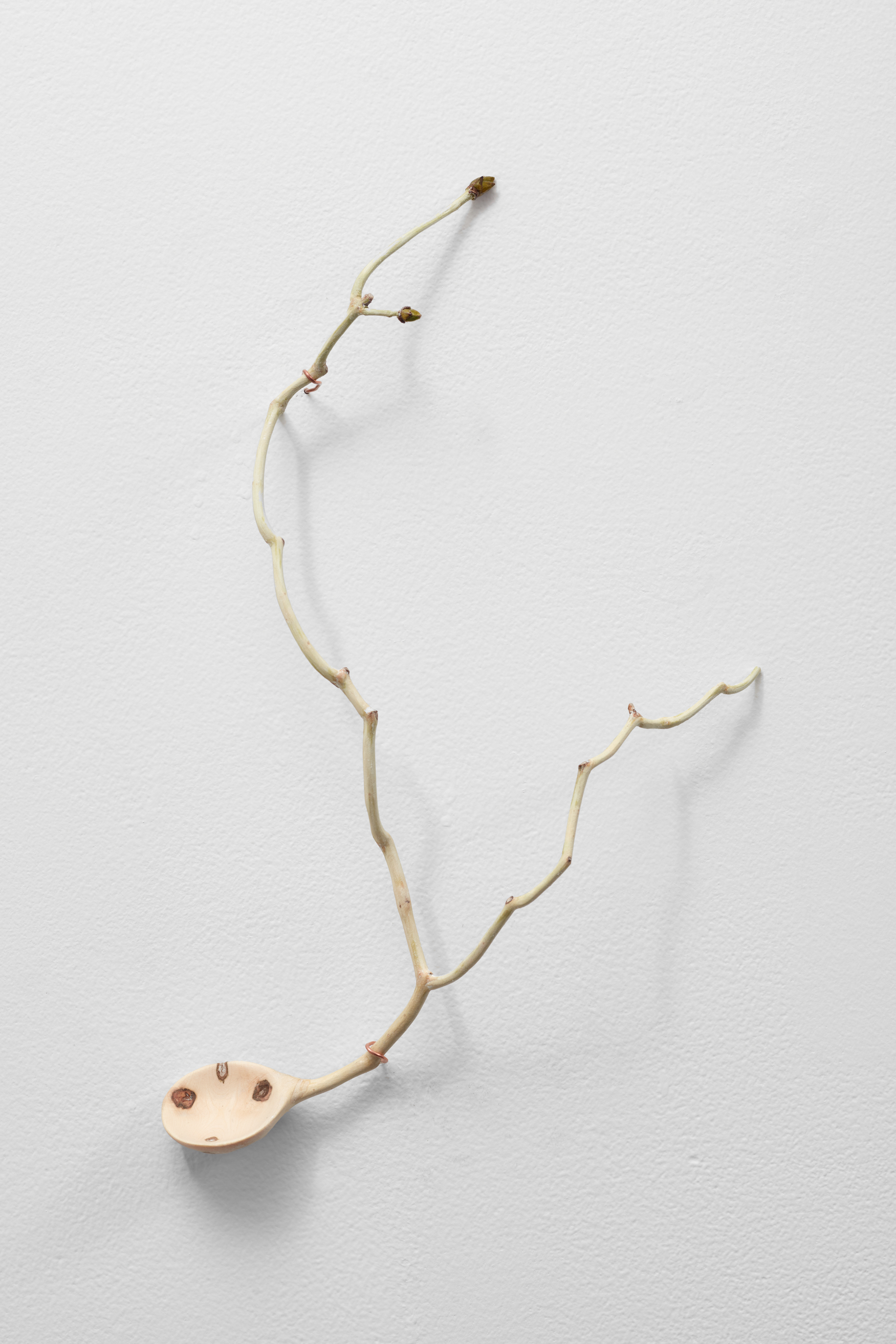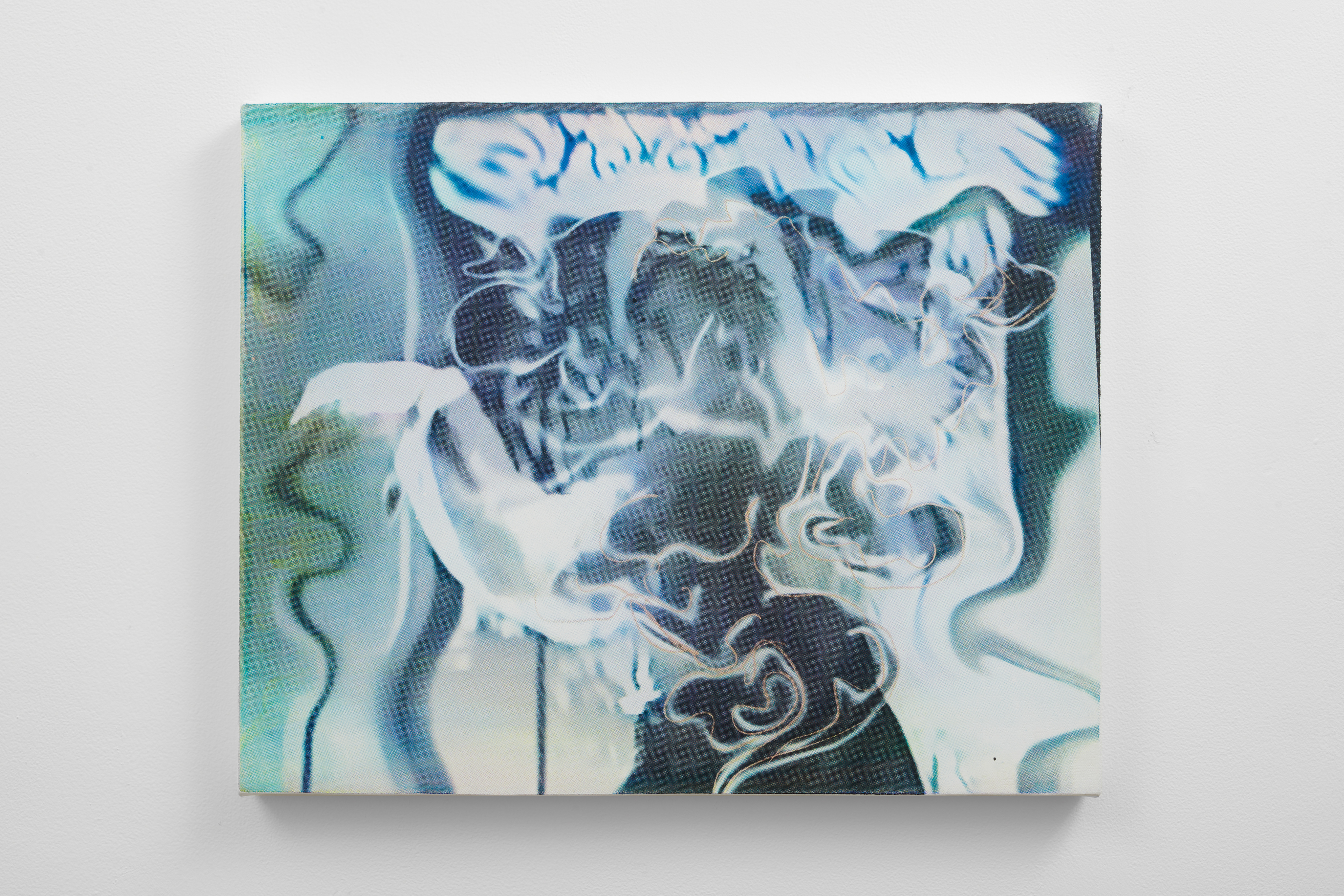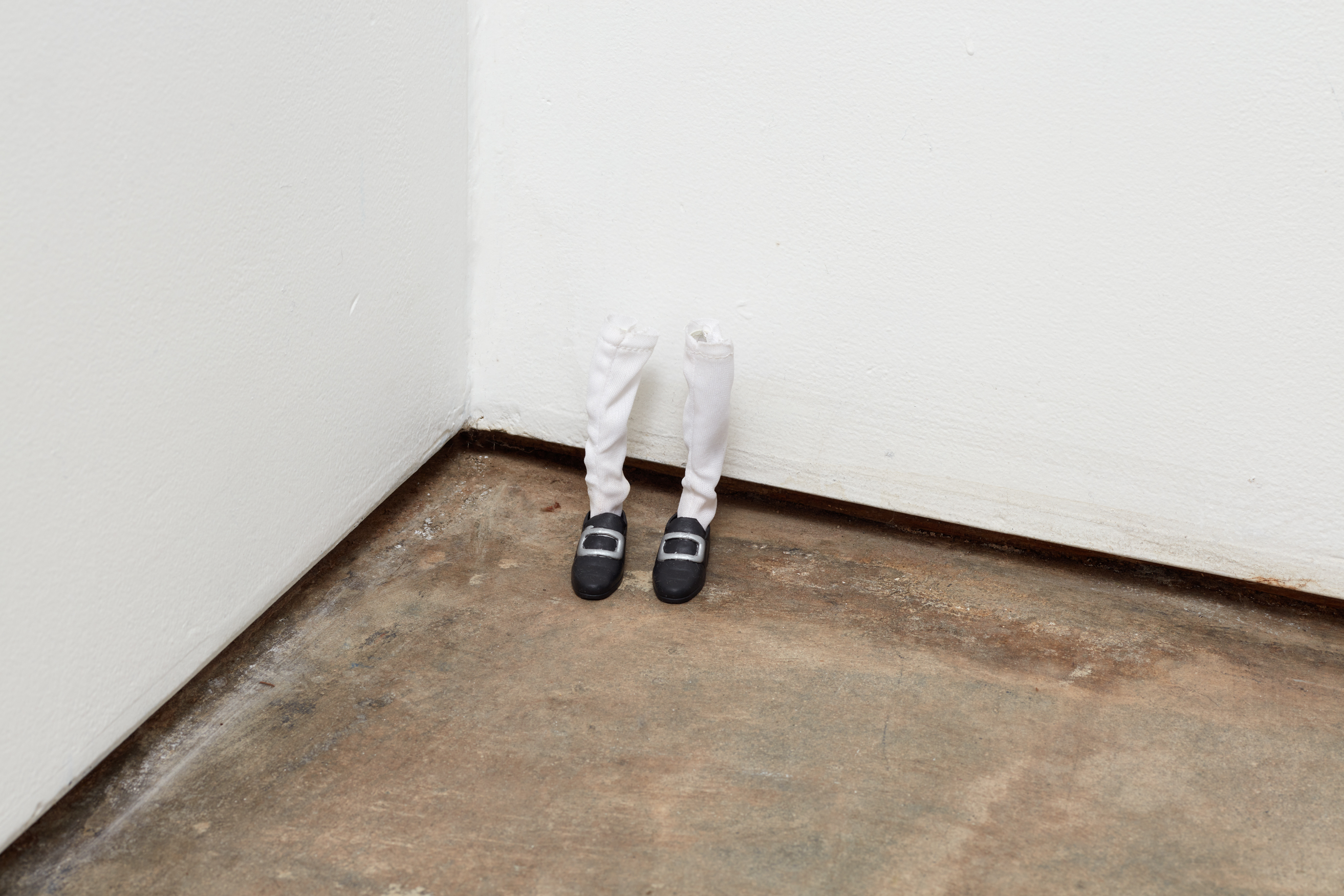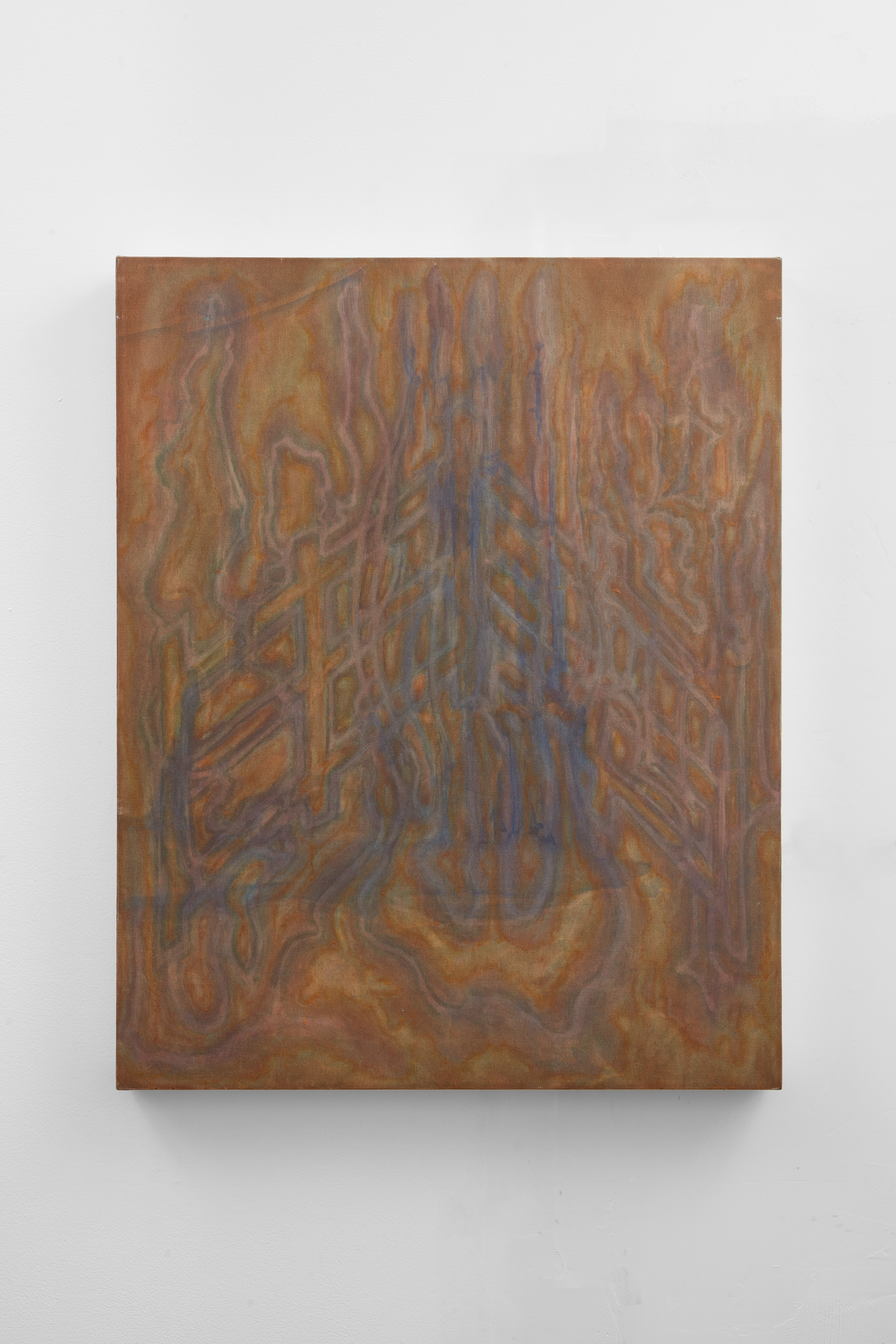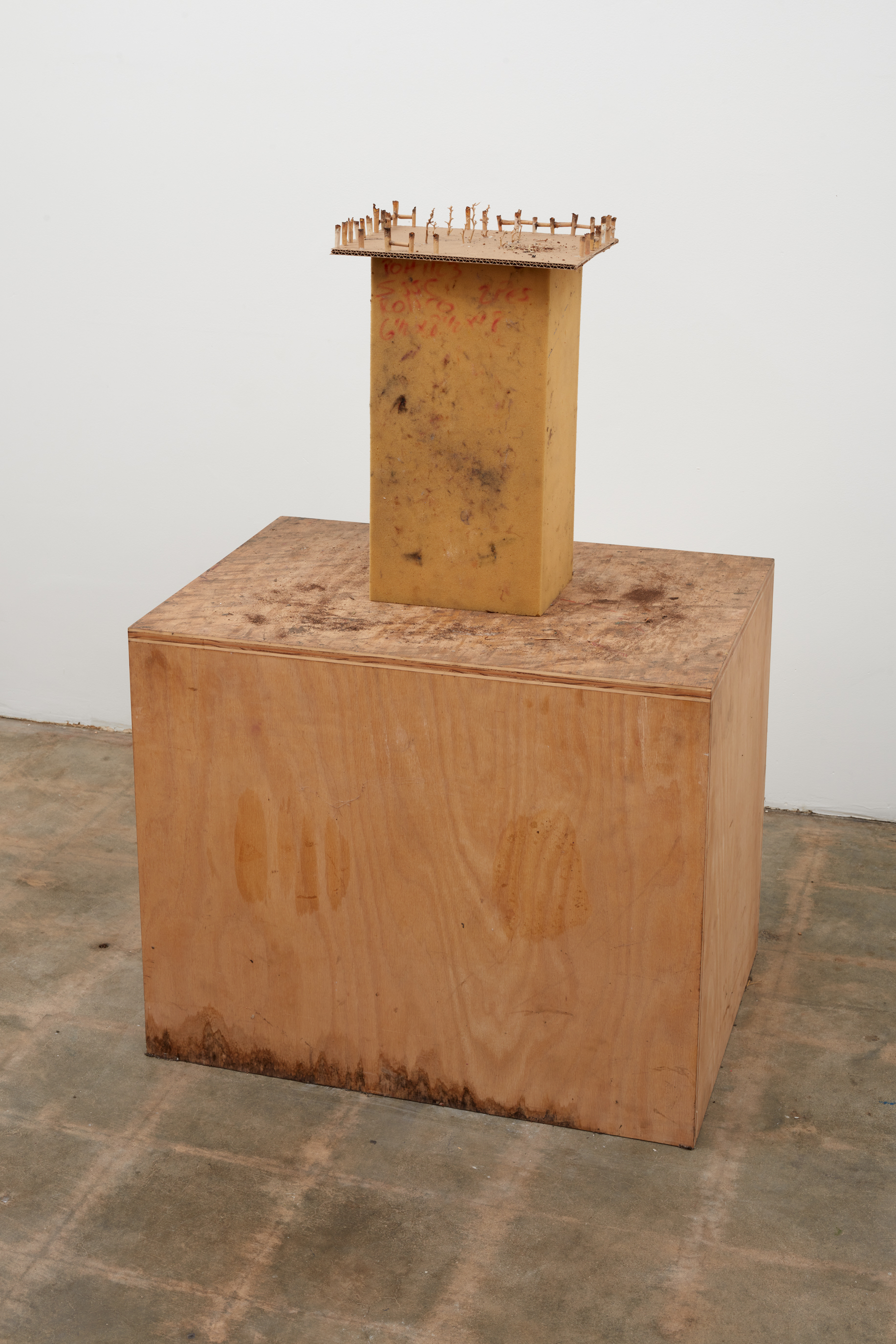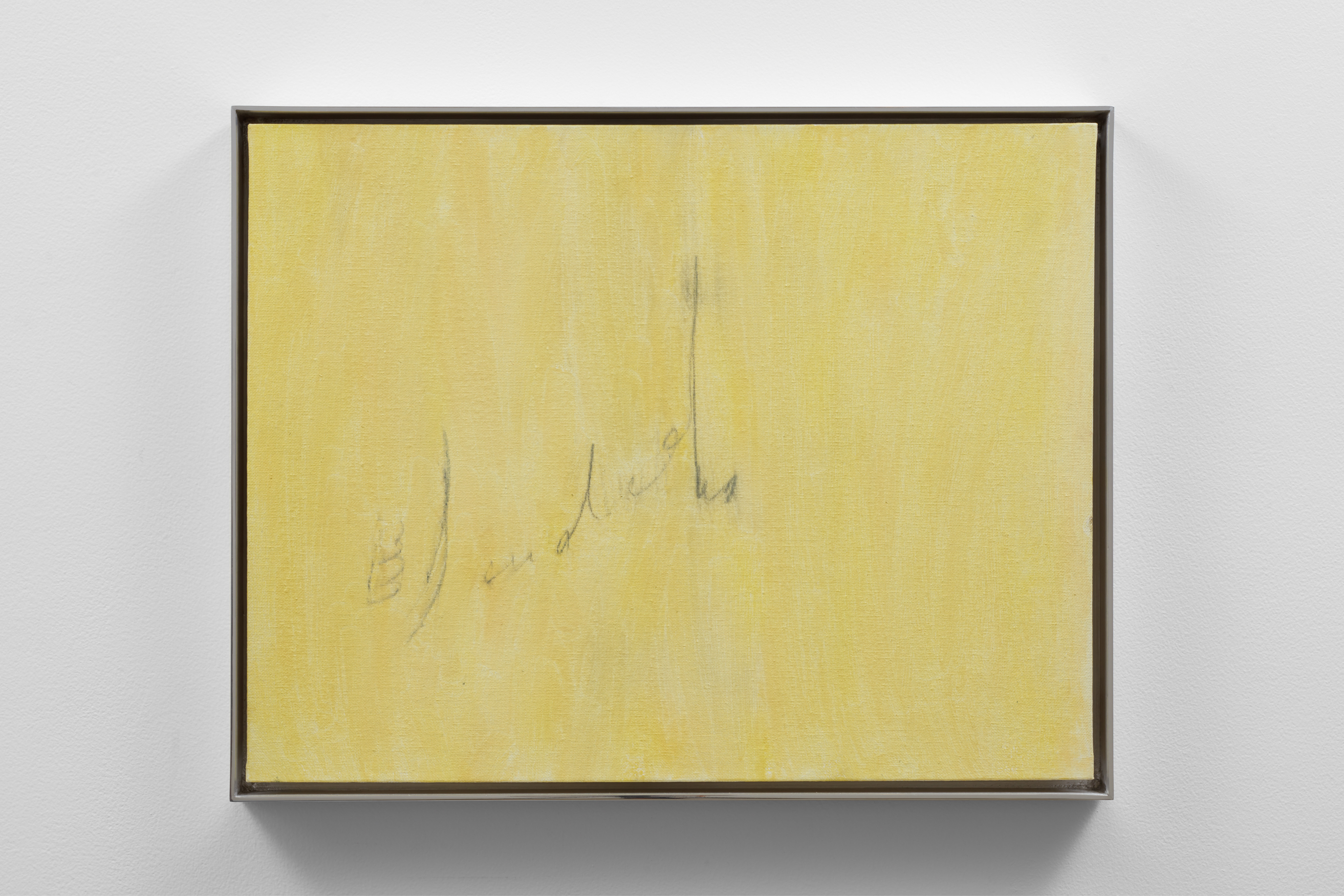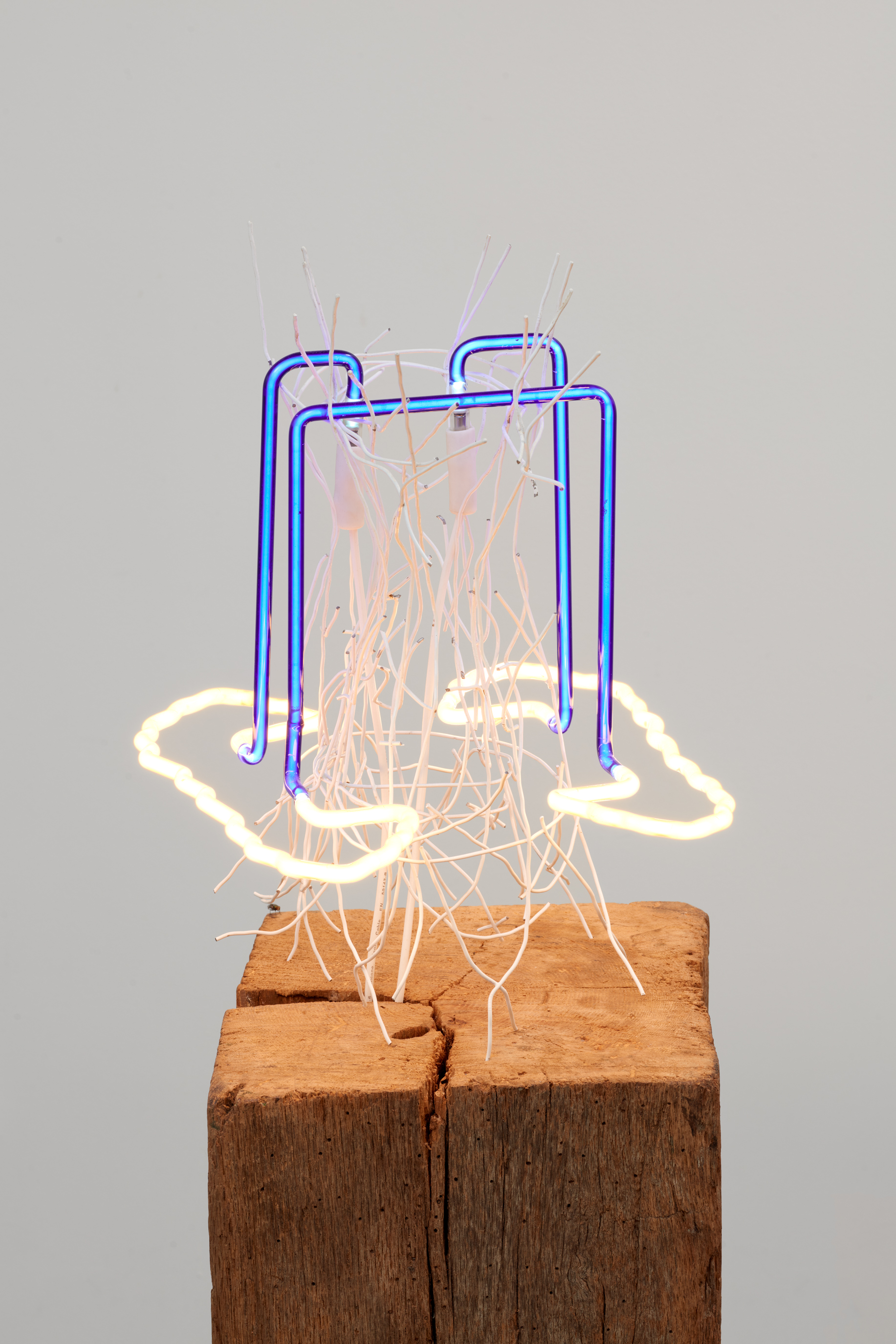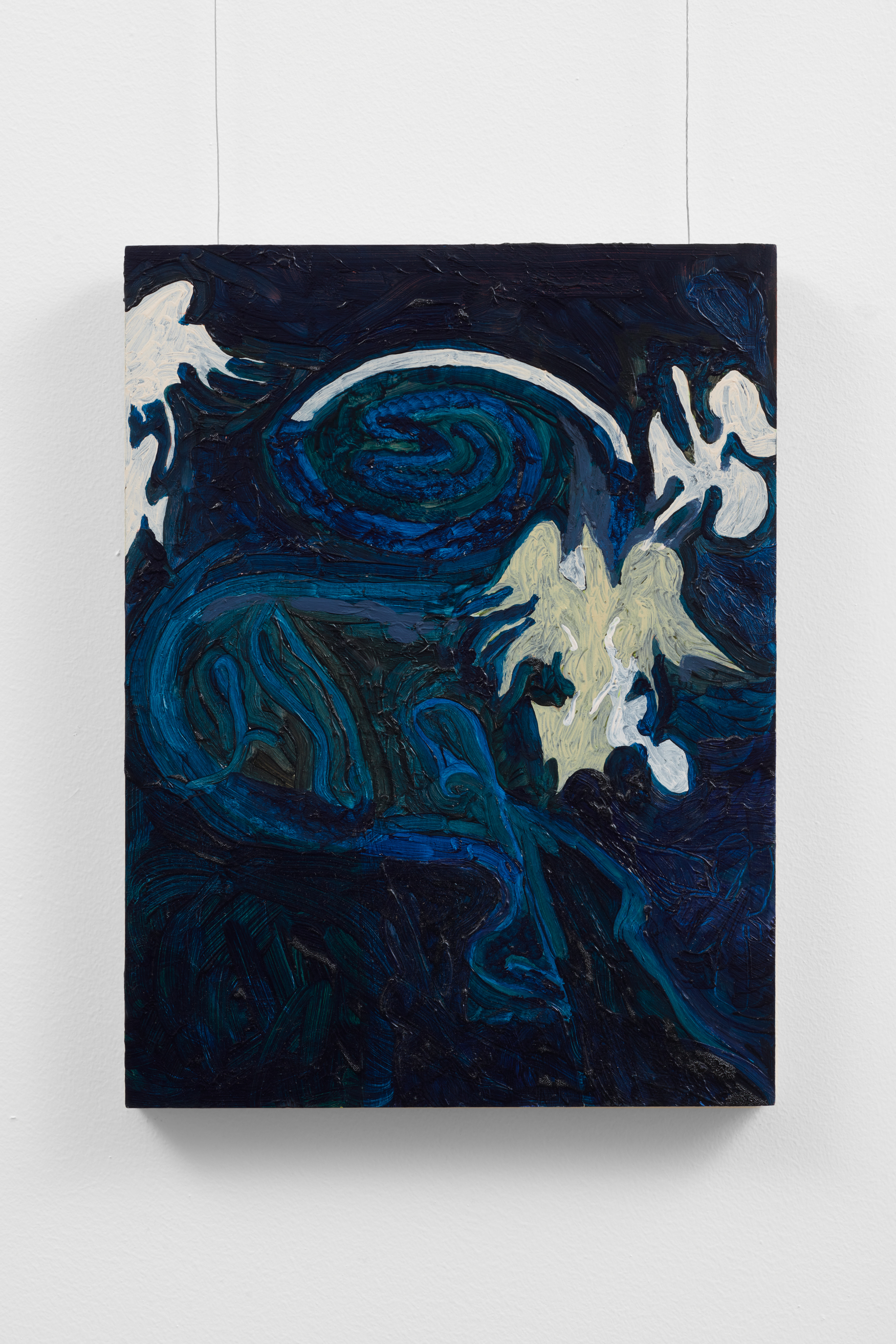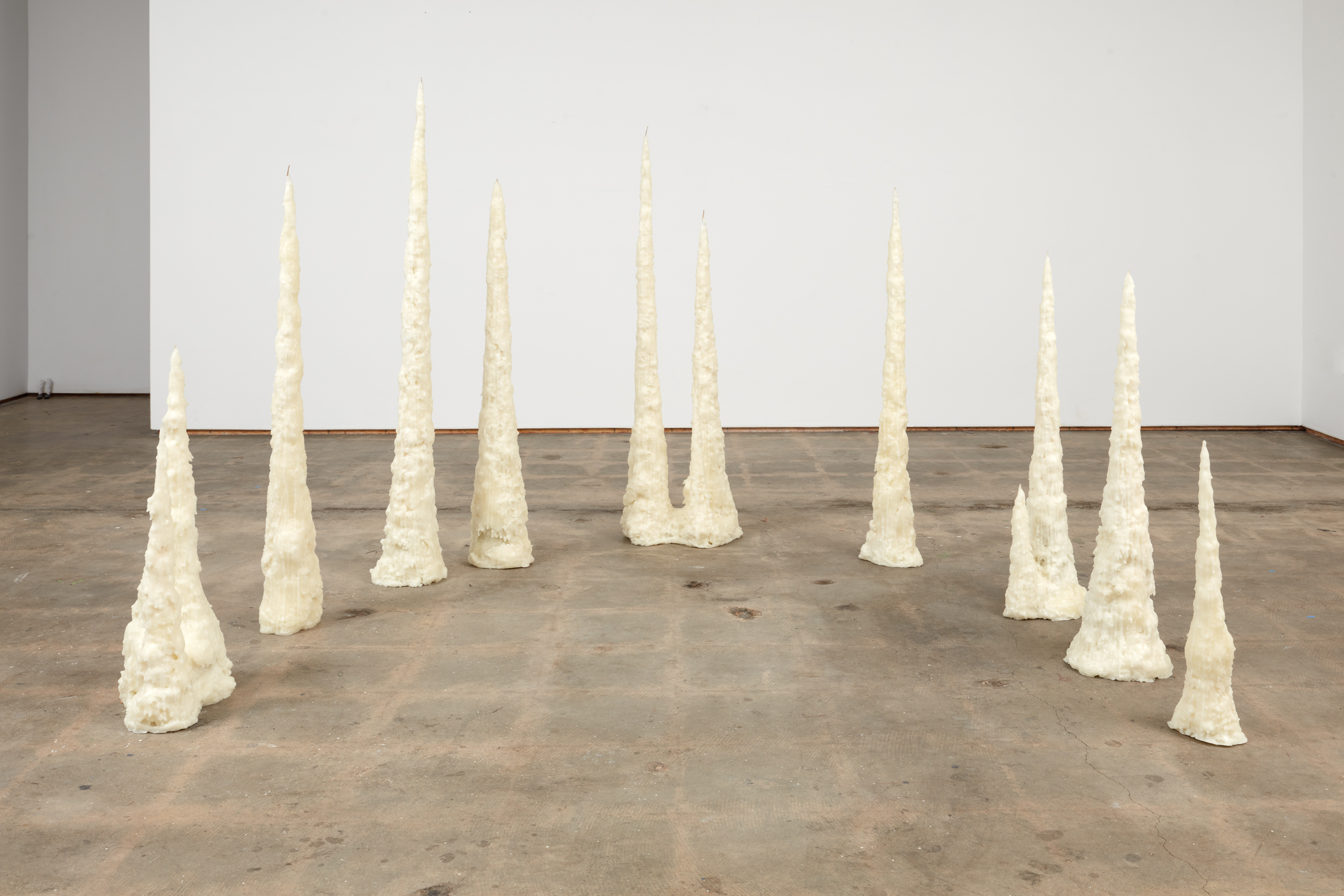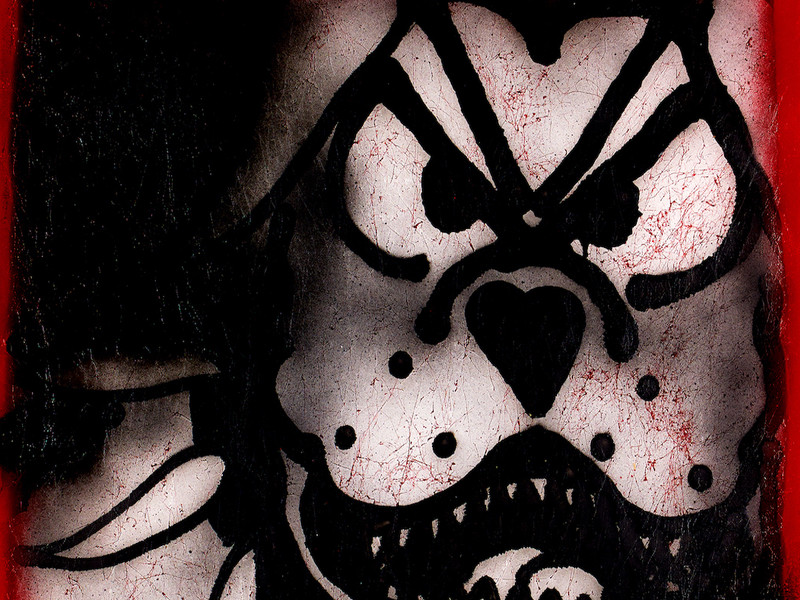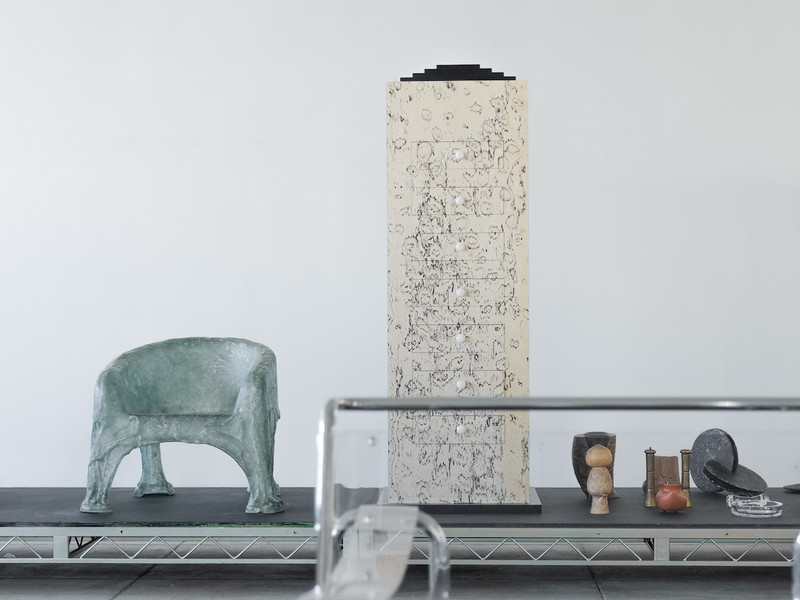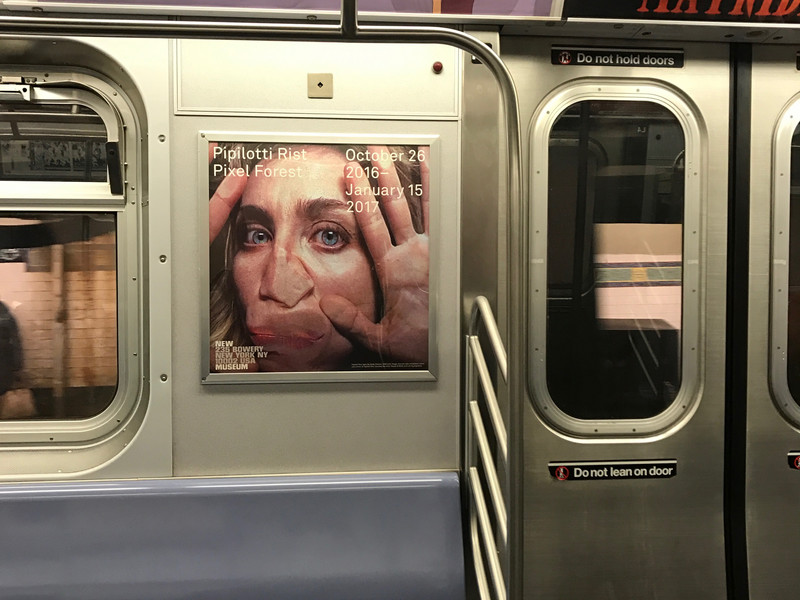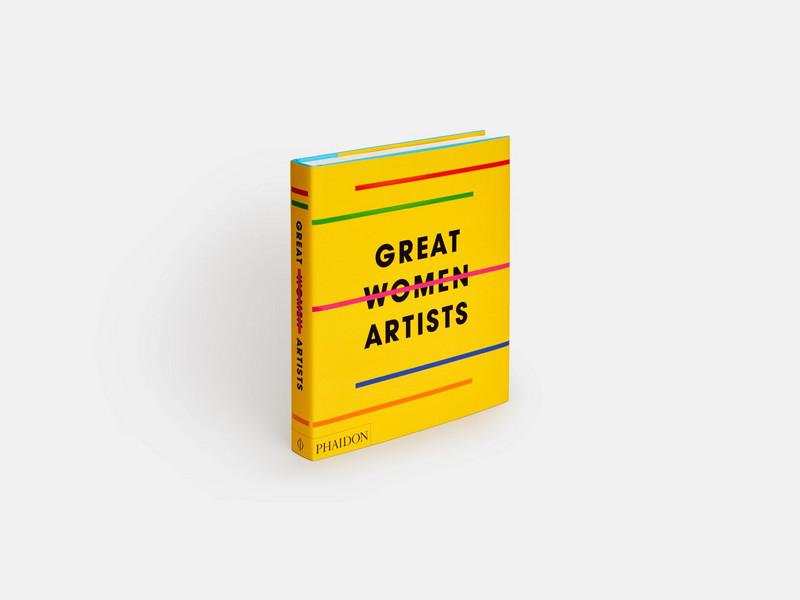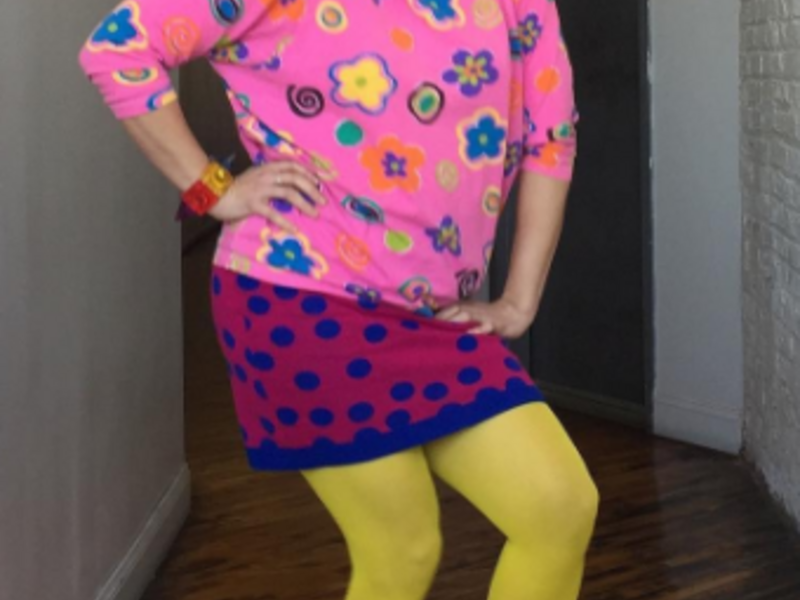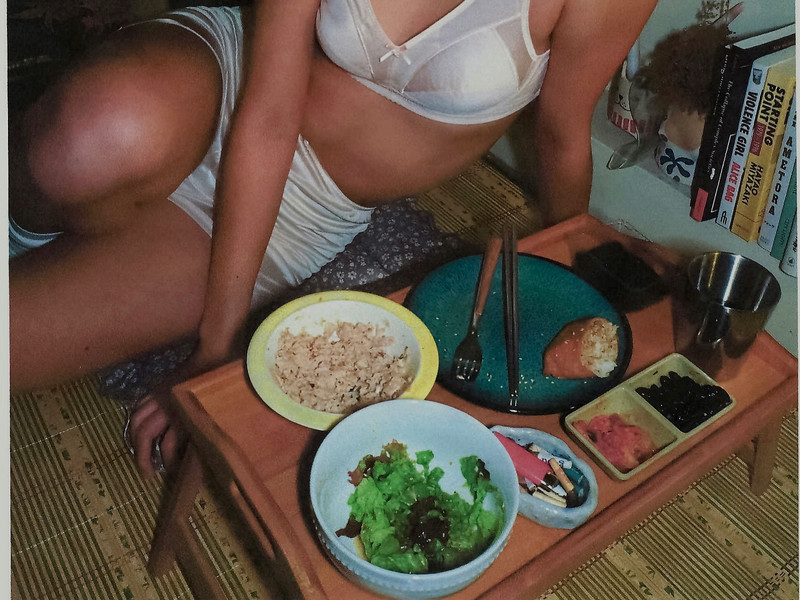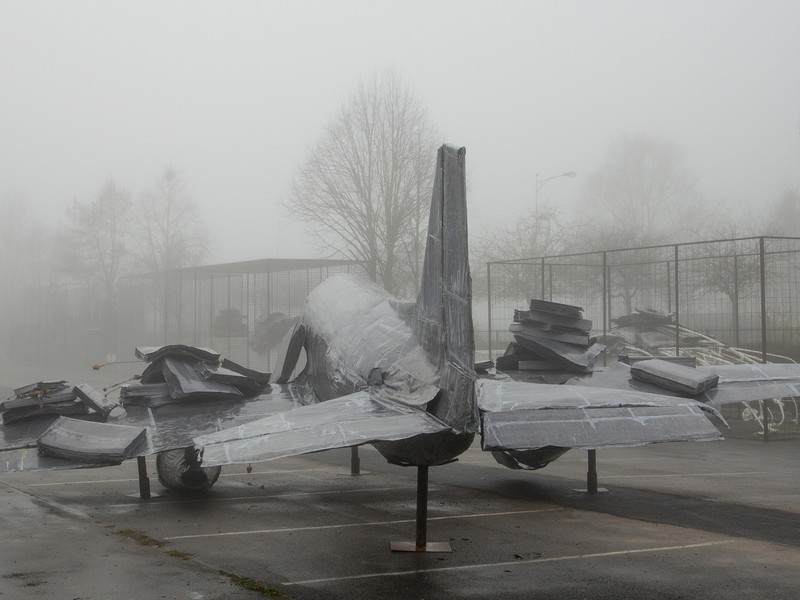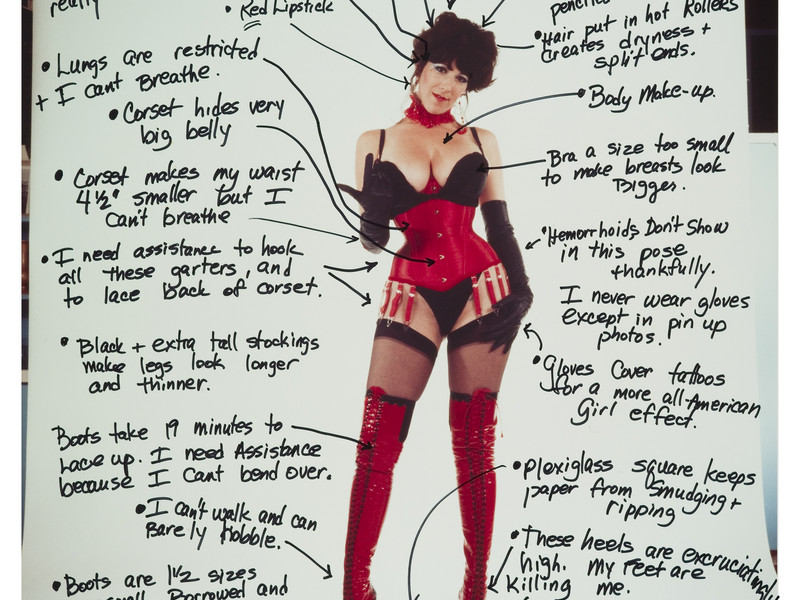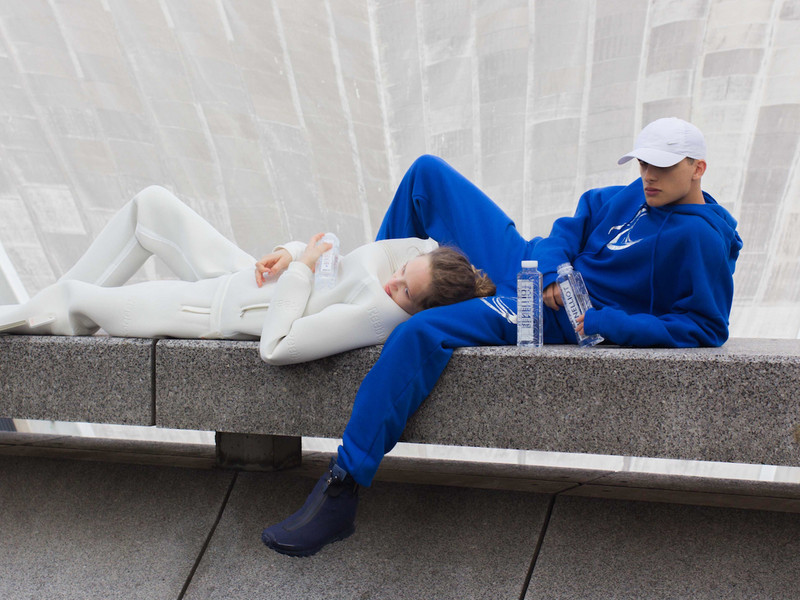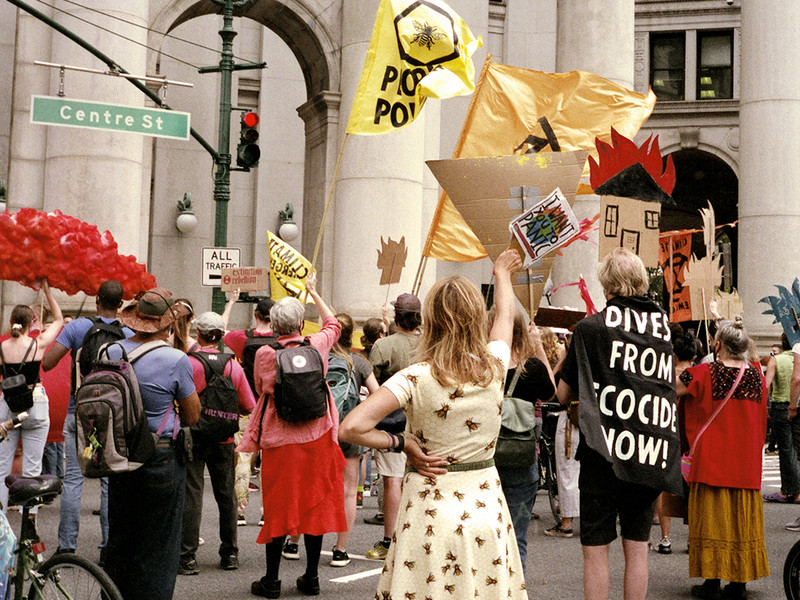The Devil’s Chestnut at Phil Callery
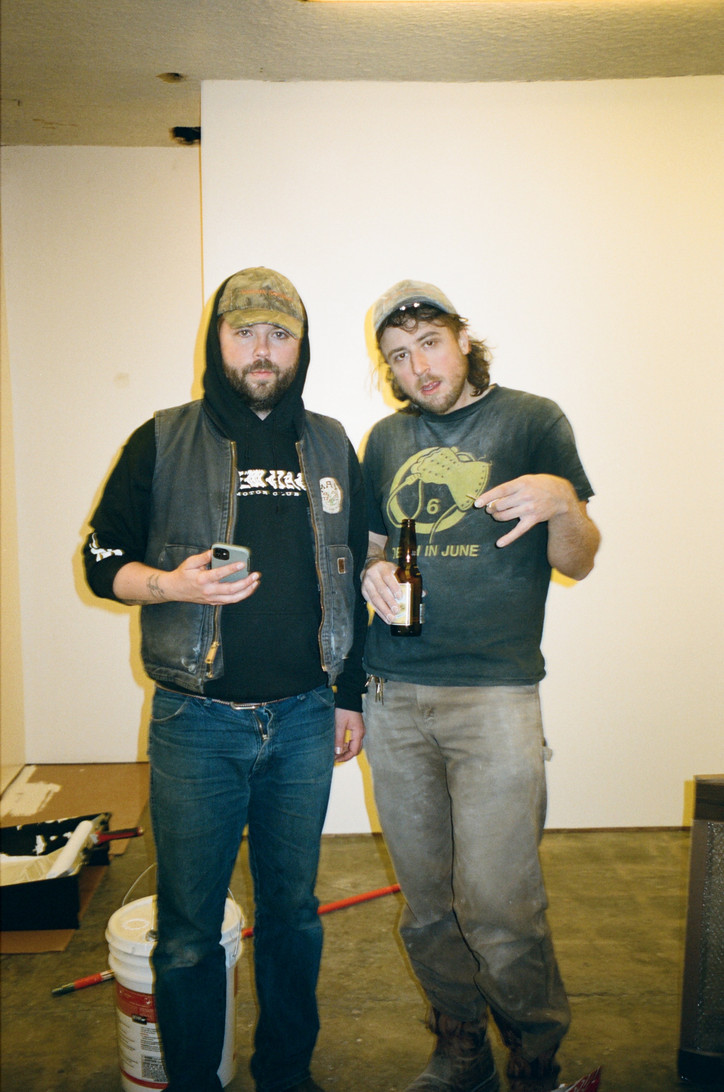
The group show is many things. Its minimal installation belies a sense of brevity that can also be found in the rather esoteric press release. Simultaneously, there is an aftermath to viewing the show that lurks nearby. A militant intention that cannot be easily resolved, if you will. Z. Susskind’s plexiglass installation Gloves (2024) which spells out ‘gloves’ in all capitalized letters embodies such militancy well. Through its black reflective surface, one sees the still industrial landscape of the neighborhood. Pop meets opacity here. Another Susskind work Time, the Old Cashier (2024) more casually plays with weight and lightness, gesturing toward unseen physical acts. Phil Davis’s C-Print photograph Ciara (2003) points to the uncomfortable gap between self-fashioning and the real, a gap that exponentially explodes in Carmel Ni’s Pilgrim shoe (2024). Elsewhere, paintings by JPW3 (Patrick Walsh), Sara Gernsbacher, and Kate Mosher Hall all enjoy varying degrees of raciness, bordering a frenzy in some cases and presenting more subdued qualities in others. Still, words cannot do justice to the feel-good line-up — rising stars and superstars who are friends of both galleries fleshing out fundamentals of their practices without a care.
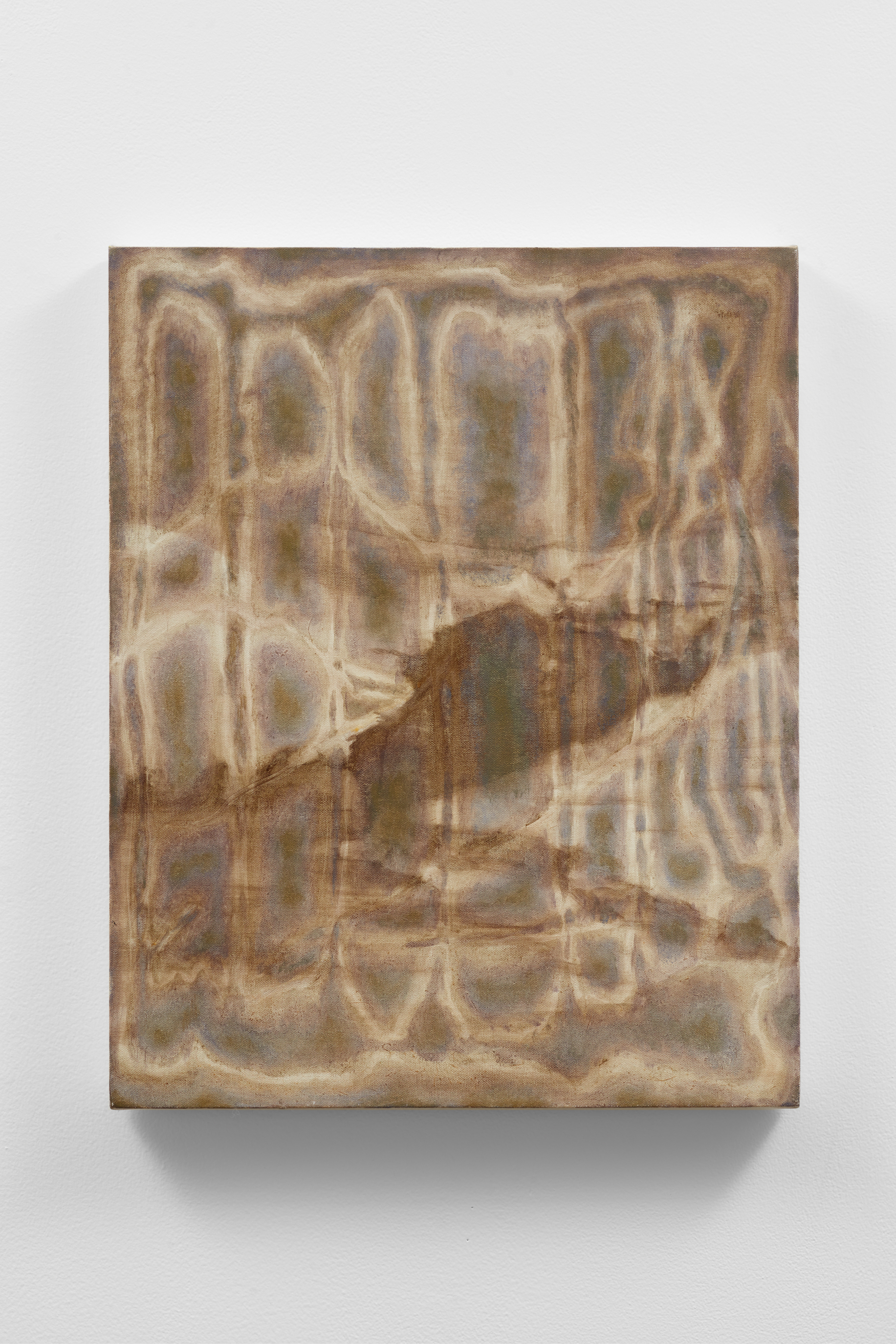
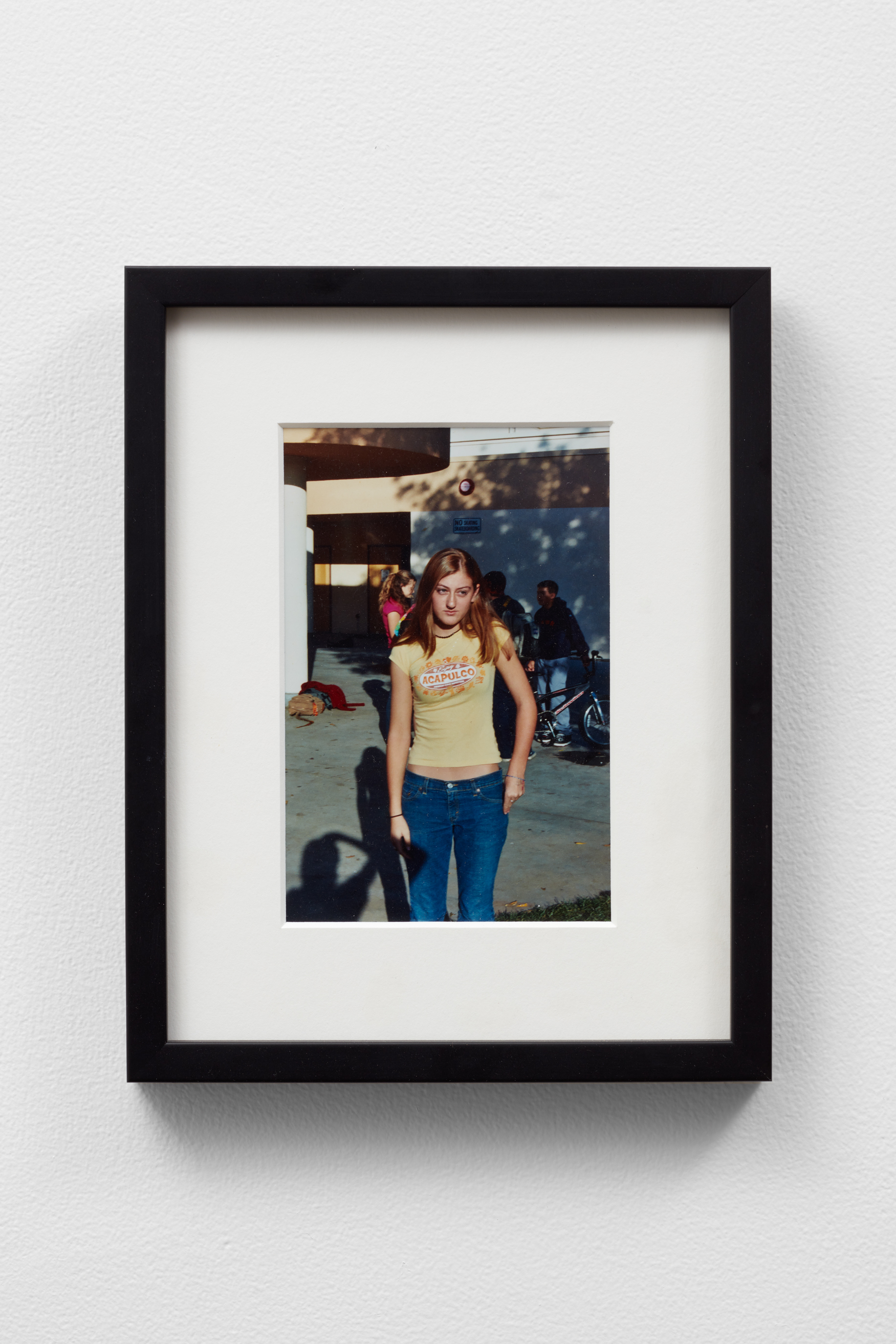
- Ravenne Swaner
- Unfolding, 2020
- Oil on canvas
- 16 x 20 in
- Phil Davis
- Ciara, 2003
- C-Print
- 7 x 9 in
Congratulations on The Devil’s Chestnut to both of you! I heard the opening was a buzzy success, tell us more about how this exhibition came to be!
Louis— I was always a fan of Phil Callery, even though I had never actually been there. Phil and I were very close friends in New York. And I’d always dreamt about going to a Phil Callery opening and there’s no better way to go to an opening than putting on a show there. In terms of timing, Entrance was heading west for Felix, which is our first operation on the west coast. This little window of opportunity opened, and we decided to sneak a show in there at the same time.
Phil— Luckily, I held on to the space, as a sublet for friends’ studio space. It was very easy to jump back in.
Louis— The mission behind Entrance, in a way, ran parallel to what I recognized was happening at Phil Callery, even though our timing was a little different. Now Entrance has grown into a gallery with a rigorous program, the need to do fairs internationally, and the want to help artists grow. The same ethos of making room for experimentation and new voices and honoring an artist’s practice is still at the foundation of both of those galleries.
I heard that, leading up to the exhibition, you two took a weeklong road trip from New York to LA. What was the road trip like?
Louis— It was incredible, both functional and fun. In the art world, it's very hard to get any time off, so we decided to take a little bit of extra time across the country. We took Route 66 and visited artists and a lot of old-school American roadside attractions along the way. Many people visit land art when they’re traveling, but we wanted to visit the world’s biggest mailbox.
We were also picking up artworks along the way for The Devil’s Chestnut. It was an adventurous treasure hunt. We visited some friends in Pittsburgh that run a project space called ROMANCE, and visited one of Phil's best friends, the artist Zach Armstrong in Dayton, Ohio. Every day, we would only decide a certain amount of driving time and what to have for dinner that night. We had burgers in Tulsa and barbecue in St. Louis. It’s good to get perspective away from the coasts and know that culture and art exists across the United States.
The Devil’s Chestnut felt like a homecoming journey that intimately revisits both galleries’ history. How does it feel to mount a very personal presentation exhibition, while two major art fairs were happening.
Phil— The installation process was intense for me, because I had to figure out how to accurately use this very intimate space, which almost became part of the exhibition. Things calmed down afterwards. Louis, while you were deep in the art fair, I was tucked away at the gallery, which functioned as a little rest stop away from the fair chaos.
Louis— The Devil’s Chestnut is a hometown group show that celebrates new voices and the history of the space. Phil Callery has always been an inviting space that mixes high and low. On the opening night, the biggest movers and shakers in the Los Angeles art scene and customers of the taco shop next door were at the gallery. The gallery originated in a very definitive moment in the Lincoln Heights, Chinatown area, where a lot of artists had their studios, and where a lot of people would visit after work. Night Gallery was founded right next door to that space, which has now grown exponentially to a real force in LA.
What are some of your observations about the neighborhood Phil Gallery is in and LA’s art scene?
Louis— There's a lot of camaraderie between artists, which I really appreciate. Artists tend to go to each other’s shows and studios a lot more. Also, by nature of having so much more space, LA attracts artists who have a lot less fear about working at a larger scale.
You two met a decade ago in New York, while Louis was a member of the downtown collective Luck You and Phil was visiting underground concerts. Can you tell me a bit more about that post-Great-Recession moment of participating in the art scene in downtown Manhattan, where a lot of cheap real estate was readily available.
Louis— I just came out of high school when I joined Luck You and some members of our collective were still in high school. We were really focused on what people were making locally and we weren't thinking about the larger art world. We were just trying to put our friends’ projects on. We started in what is now the lower-level gallery of Entrance, back then it was really a clubhouse. We would also use abandoned spaces in the neighborhood to put on shows. I don't think we were necessarily aware of an economic downturn in the neighborhood, which was mostly food distribution and clothing shops. The collective did our best to respect the community that was immediately around us. We would work with our neighbors, invite them to shows, and respond to their noise complaints. Then, the art world seeped in, as we all sort of grew up out of the collective.
The collective wasn’t really interacting with anything outside of our local neighborhood community. Sometimes people would pluck us out and drop us into centers of the art world, because we had a story that can be told. The collective insists on art as a way of living rather than a job and I still live by that to this today.
Phil— Phil Callery started as my studio. I was just having friends over every night drinking beer and playing dice. One day, I decided to give my friends shows in that space. The gallery just came out of that need. At the same time, I was visiting New York frequently, as Night Gallery’s preparator installing their art fair booths. That's how I met Louis, it turns out I went to high school with his then roommate.
Now, many of the artists in The Devil’s Chestnut are superstars showing with powerhouse galleries in LA. Both Entrance and Phil Callery are spaces of experimentation and collaboration for emerging artists. So much labor is embedded into being an incubator, but often such labor is under-appreciated, as we live in a cultural moment of “bigger is better”. Tell us more about how you keep up with this spirit of experimentation with integrity and good faith.
Phil— For me, the goal was never to get to a place. I was just thinking about what I can do that’s interesting, fun, and stimulating. It’s hard for me to even take credit for any kind of integrity that may exist there. I’m just wired to just have a good time and keep doing interesting things.
Louis— Authenticity seeps out when you’re doing the next right thing. I love running Entrance, because I believe that the mission that I started with is scalable. A lot of the artists that I am working with had never shown before, and now have a career as artists and can make work for a living. I am always trying to make room for new voices. My favorite thing is when I meet older curators or gallerists, who have been in the industry for say 50 years and are still excited when they walk into a room and see something new. They're not jaded and have stayed curious. And I think that curiosity is scalable, in terms of elevating voices that matter. Phil and I got that curiosity from our days of touring in bands, where we witnessed so much craziness.
Phil— Entrance is like almost the sustainable progression of what Phil Callery could have been?
Louis— Right, how do you take a gallery to the next level without basically becoming like some stock exchange and selling out? I never worked at a big gallery and have retained that sensitivity to the community around me. So has Phil Callery. If you mentioned Pill Callery in LA, everyone always remembers good memories of shows they have seen or the time they spent there. You can't ask for much more than that in this world.
